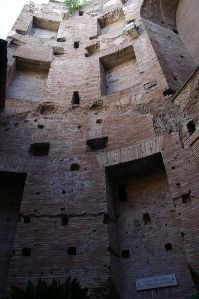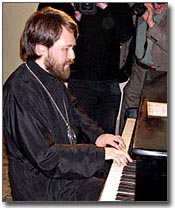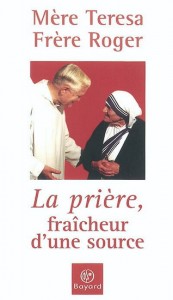Well, I have to hand it to him. A real Italian pro at work. He slipped in, waited, selected his victim, checked that nobody was looking, then struck. Even though the closed circuit cameras caught sight of him as he took the bag, they didn’t catch his face as he disappeared through the back exit. A perfect crime.
An all-too-familiar story in Rome, of course, the sort of thing the guidebooks warn you about (the specialità romana being Vespa-riding thieves seizing handbags at intersections). Unfortunately for me, I was the unsuspecting victim, and in a surprising location – the beautiful Basilica of Santa Maria degli Angeli located a stone’s throw from Opera Roma. I had strolled in having a few minutes to spare before catching my bus out to the airport, intrigued by its architectural origins as part of the huge Diocletian complex of baths, once the largest building of its type in the Roman world. Once inside, I sat down to pray, ruminating among other things upon the whole complex relationship between the Roman Empire and Christianity. When I opened my eyes, my baggage only two inches away from me was gone (including my plane ticket and a computer with six years’ worth of files, though thankfully not my passport or credit card). As I remarked to the very helpful parish priest who watched the CCTV video with me to no avail, that was a pretty expensive prayer! But then again… the second before the thief made his getaway I had been thinking about the scourging of Jesus at the hands of Rome, and as I left the church for the bus, I imagined a voice saying: ‘they stripped me of everything, you know…’ So no point in complaining about a few lost electronic gadgets, although I would advise anyone headed for the Basilica Santa Maria degli Angeli (well-known to the local Carabinieri , it turns out) either to pray with their eyes open or else chain themselves to their valuables!
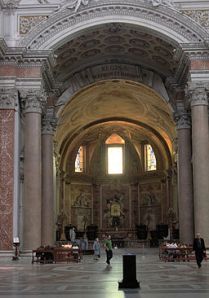 It was an inauspicious end to what had nonetheless been a memorable day in the Eternal City. In the morning, I had joined a crowd of some 50,000+ in a pleasantly dry St Peter’s Square for Pope Francis’s General Audience, and I have to say that the atmosphere was electric. Somehow I have always found the Piazza when full a more moving sight than St Peter’s Basilica itself (excluding Michelangelo’s Pietà), perhaps because of the collective energy, the sensum fidelium represented by the massed pilgrims from around the whole world. On this occasion what impressed me was the sense of anticipation, the feeling as Pope Francis arrived and began to ride around the square to the delight of the crowd that this was not simply ‘business as usual’, but that something important was actually happening. It is difficult to identify any one factor behind the buzz in St Peter’s Square: the Pope’s spontaneous manner and proximity to the crowds, the limpidity of his uncomplicated yet profound teaching, his roots in the Global South where the demographic centre of gravity of world Christianity is now located, the heartfelt longing of so many ordinary believers for the Church’s return to the simplicity of the Apostolic Age… all these contributed to creating an unforgettable event. The closest parallel in my own experience is probably the annual European Meetings of the Taizé Community that I attended some two decades ago in the years around the time of the fall of the Berlin Wall, when there was a similar feeling among the crowds of being caught up in ‘history in the making’, that we were participating in something radically new , the Divine novum which cannot simply be extrapolated out of the past.
It was an inauspicious end to what had nonetheless been a memorable day in the Eternal City. In the morning, I had joined a crowd of some 50,000+ in a pleasantly dry St Peter’s Square for Pope Francis’s General Audience, and I have to say that the atmosphere was electric. Somehow I have always found the Piazza when full a more moving sight than St Peter’s Basilica itself (excluding Michelangelo’s Pietà), perhaps because of the collective energy, the sensum fidelium represented by the massed pilgrims from around the whole world. On this occasion what impressed me was the sense of anticipation, the feeling as Pope Francis arrived and began to ride around the square to the delight of the crowd that this was not simply ‘business as usual’, but that something important was actually happening. It is difficult to identify any one factor behind the buzz in St Peter’s Square: the Pope’s spontaneous manner and proximity to the crowds, the limpidity of his uncomplicated yet profound teaching, his roots in the Global South where the demographic centre of gravity of world Christianity is now located, the heartfelt longing of so many ordinary believers for the Church’s return to the simplicity of the Apostolic Age… all these contributed to creating an unforgettable event. The closest parallel in my own experience is probably the annual European Meetings of the Taizé Community that I attended some two decades ago in the years around the time of the fall of the Berlin Wall, when there was a similar feeling among the crowds of being caught up in ‘history in the making’, that we were participating in something radically new , the Divine novum which cannot simply be extrapolated out of the past.
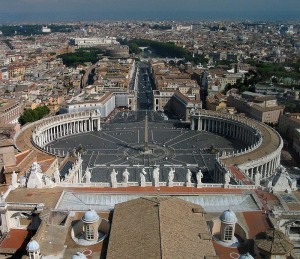 The same can be said of the ‘concert for peace’ at the Auditorium Conciliazione (formerly home to the Accademia di Santa Cecilia’s symphony concerts) the evening before, where Russian soprano Svetlana Kasyan certainly lived up to her billing as a major talent. Although I tend to be wary of published comparisons of any artist with Maria Callas or any of the legends of the past, I have to say that in my years spent coaching lyric artists at the Opéra Bastille in Paris and elsewhere, I have rarely heard someone as young as Ms Kasyan capable of such vocal power (even if at times the usual problems of balance between even the most accomplished soloist and an onstage orchestra performing music written for an opera pit were in evidence). Her performance of arias by Verdi, Puccini and Catalani, delivered in a refreshingly unaffected and unpretentious manner, left no doubt as to her formidable expressive capabilities.
The same can be said of the ‘concert for peace’ at the Auditorium Conciliazione (formerly home to the Accademia di Santa Cecilia’s symphony concerts) the evening before, where Russian soprano Svetlana Kasyan certainly lived up to her billing as a major talent. Although I tend to be wary of published comparisons of any artist with Maria Callas or any of the legends of the past, I have to say that in my years spent coaching lyric artists at the Opéra Bastille in Paris and elsewhere, I have rarely heard someone as young as Ms Kasyan capable of such vocal power (even if at times the usual problems of balance between even the most accomplished soloist and an onstage orchestra performing music written for an opera pit were in evidence). Her performance of arias by Verdi, Puccini and Catalani, delivered in a refreshingly unaffected and unpretentious manner, left no doubt as to her formidable expressive capabilities.
A no less remarkable feature of the concert, however, was the music and presence of Russian Orthodox bishop Hilarion Alfeyev, highlights being Svetlana Kasyan’s rendition of the plaintive Rachel’s Lament from his Christmas Oratorio (which also provided the evening’s encore) and a sombre, brooding song-cycle to texts by Federico Garcia Lorca. It might be argued that the setting – a hall whose heavy, uninspiring stage décor reminded me somewhat of the Salle Olivier Messiaen in Radio France – was not optimal for the more meditative moments of Metropolitan Hilarion’s music, and Italian orchestras such as the Rome Sinfonietta perhaps need an extra ounce of gravitas to convey its imposing solemnity. Yet this did nothing to diminish the success of the evening, and it would be hard to overestimate the symbolic significance of an event in which the bishop-composer found himself seated between Catholic Cardinals Gianfranco Ravasi (President of the Pontifical Council of Culture) and Kurt Koch (President of the Pontifical Council for Christian Unity), an intriguing additional ecumenical factor being the saturation of references in Bishop Hilarion’s works to the greatest ever Protestant musician – J.S. Bach. Here too, this was not merely a concert but a happening oriented not so much to the past as to a future of unprecedented conversations between Christian traditions that lies tantalizingly open. That it should have taken place in an auditorium on the Via della Conciliazione (the ‘Way of Reconciliation’) is surely more than a coincidence.
In the back of my mind as I walking back after the concert across an empty, moonlit St Peter’s Square and now as I write these words was the spiritual vision of one of the greatest modern pioneers of Christian Unity, Frère Roger of Taizé (1915-2005). Last December the ‘Pilgrimage of Trust’ organized by the Taizé Community filled the square in order to pray with Benedict XVI, from whose hand this Swiss Reformed pastor personally received communion in the last months of his life. Frère Roger’s overwhelming conviction was that the way forward for the Church lay in re-unifying the riches of the three Christian traditions within the one undivided Body of Christ- the Eucharist, devotion to the Mother of God and the role of the Pope as a visible universal pastor in Catholicism, the liturgical depth and connection with ancient Christian tradition of Eastern Orthodoxy, the passion for the Scriptures of his own Protestant upbringing. If there was much excitement around the time of the Second Vatican Council (at which he was an observer) that this vision might one day be realized, it has to be said that in recent decades it has seemed to have suffered a certain loss of impetus. But on the strength of my few days’ observation of goings-on in Rome, the time is ripe for its resurgence.
What price a prayer? Yes, my brief to the Italian capital turned out to be more expensive than anticipated, thanks largely to my brush with the professional services of the Roman branch of Organized Crime Inc. But a prayer for unity, in echo of the words of Jesus himself in John 17, is worth every last Euro. And if the thief happens to be reading this blog, in the bag you stole is a CD of Bishop Hilarion Alfeyev’s St Matthew Passion given to me by the composer himself. Go ahead and take a listen – you might just learn something.
_________________________
You can read Svetlana Kasyan’s own reflections on her meeting with Pope Francis in the latest instalment of the ‘Moynihan Letters’ here
